 I will admit that many kitchen gadgets can look fancy and fun to use until you have to wash them, and their many fiddly parts! Aside from the basics in my kitchen saucepans, sieves, mixing bowls, wooden spoons and roasting trays five personal equipment essentials are: my folded, Damascus steel chopper, butchers block chopping board, seasoned wok, Chinese ladle and bamboo steamers. These serve all my peeling, smashing, chopping, frying, steaming and boiling needs. If you dont have a wok, a deep-sided frying pan will work just as well and if the thought of a chopper makes you nervous, a sharp kitchen knife will work. CHINESE COOKING TECHNIQUES Stir-frying This is by far the most common method of cooking when using a wok. The wok was designed to sit above an open fire in a clay hole and the thin base and sides are designed to evenly distribute the heat throughout the entire cooking surface. You must remember that once you begin cooking youll have to pay full attention to what is going on in the wok as you can easily burn the ingredients if you get distracted.
I will admit that many kitchen gadgets can look fancy and fun to use until you have to wash them, and their many fiddly parts! Aside from the basics in my kitchen saucepans, sieves, mixing bowls, wooden spoons and roasting trays five personal equipment essentials are: my folded, Damascus steel chopper, butchers block chopping board, seasoned wok, Chinese ladle and bamboo steamers. These serve all my peeling, smashing, chopping, frying, steaming and boiling needs. If you dont have a wok, a deep-sided frying pan will work just as well and if the thought of a chopper makes you nervous, a sharp kitchen knife will work. CHINESE COOKING TECHNIQUES Stir-frying This is by far the most common method of cooking when using a wok. The wok was designed to sit above an open fire in a clay hole and the thin base and sides are designed to evenly distribute the heat throughout the entire cooking surface. You must remember that once you begin cooking youll have to pay full attention to what is going on in the wok as you can easily burn the ingredients if you get distracted.
With this in mind it is important that all of your ingredients are prepared before you begin to cook. Steaming This traditional Chinese cooking method is considered to be a healthy option as it requires little to no oil. Food is often cooked within a bamboo basket, and the moist heat enhances the foods natural flavours and locks in nutrients. Deep-frying As long as your oil is super-hot this technique of cooking not only locks in the foods flavour and nutrients, it adds a depth of texture that many other cooking methods cannot achieve. Many believe its an unhealthy option but if cooked correctly the hot oil seals the outside of the ingredients, preventing excess oil from being absorbed, and the high heat cooks the food super-fast. Braising Slow-cooking in China has been perfected over thousands of years.
There are many villages that are famous for their braising methods: cutting the ingredients into small pieces and braising them in small amounts of liquid. Braising makes the toughest of meats tender and juicy, where food literally melts in the mouth and slides off the bone. Sauting This method uses less oil than deep-frying and a lower temperature. Meat is often cut into thin slices and coated in a cornflour batter, cooked on one side and then flipped over to be cooked on the other side. Food becomes crisp on the outside and tender in the middle. Tenderising Youve probably noticed that when you eat at a Chinese restaurant or takeaway, the meat always seems to be supremely tender and juicy and some meats even have a silky smooth texture.
The process that can create this texture is called tenderisation; the Chinese call it velveting. Its a very simple process, though it does take some planning ahead, as ideally you want the meat tenderising for at least 2 hours before you cook it. Heres how I would tenderise meat or fish:
 1 tbsp Chinese rice wine (or use water)
1 tbsp Chinese rice wine (or use water)  1 tbsp cornflour (cornstarch)
1 tbsp cornflour (cornstarch)  1 tbsp dark soy sauce
1 tbsp dark soy sauce  1 tbsp light soy sauce
1 tbsp light soy sauce  1 tsp bicarbonate of soda (baking soda) Add all the ingredients to a large bowl along with 350600g (1221oz) of your sliced meat or fish. Mix everything together vigorously with your hands for 3045 seconds; there should be no liquid left sitting in the bottom of the bowl. Cover and set aside for, ideally, 2 hours before cooking.
1 tsp bicarbonate of soda (baking soda) Add all the ingredients to a large bowl along with 350600g (1221oz) of your sliced meat or fish. Mix everything together vigorously with your hands for 3045 seconds; there should be no liquid left sitting in the bottom of the bowl. Cover and set aside for, ideally, 2 hours before cooking. 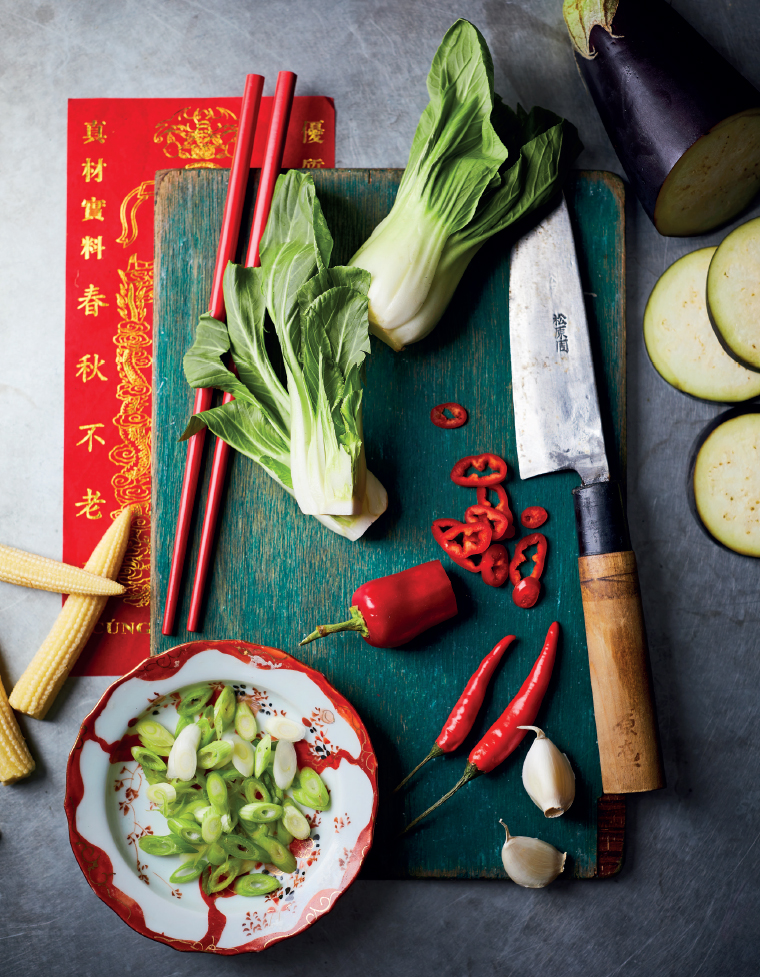 EGG DROP SOUP This soup, so called for the method used to cook the eggs, hits all the right notes: warm, comforting, savoury and yet it still has a deliciously subtle sweetness.
EGG DROP SOUP This soup, so called for the method used to cook the eggs, hits all the right notes: warm, comforting, savoury and yet it still has a deliciously subtle sweetness.
Found in many Chinese restaurants, its also particularly popular in Chinese takeaways across the world. 800ml (3 cups) vegetable stock
800ml (3 cups) vegetable stock  1 x 420g (15oz) can creamed corn
1 x 420g (15oz) can creamed corn  2 tbsp cornflour (cornstarch) mixed with 4 tbsp water
2 tbsp cornflour (cornstarch) mixed with 4 tbsp water  2 eggs, beaten
2 eggs, beaten  12 tsp sesame oil From the store cupboard white pepper, to taste tsp salt
12 tsp sesame oil From the store cupboard white pepper, to taste tsp salt  Pour the vegetable stock into a medium saucepan and bring to the boil. Next add the creamed corn and return to the boil, before reducing to a gentle simmer and seasoning with white pepper and salt to taste. Stir the cornflour mixture and then gradually add to the simmering soup, stirring constantly until you have reached the desired consistency. Turn the heat down to low and slowly pour in the beaten eggs, swirling and stirring the soup at the same time. Switch off the heat. Transfer the soup to serving bowls, add a drizzle of sesame oil and serve.
Pour the vegetable stock into a medium saucepan and bring to the boil. Next add the creamed corn and return to the boil, before reducing to a gentle simmer and seasoning with white pepper and salt to taste. Stir the cornflour mixture and then gradually add to the simmering soup, stirring constantly until you have reached the desired consistency. Turn the heat down to low and slowly pour in the beaten eggs, swirling and stirring the soup at the same time. Switch off the heat. Transfer the soup to serving bowls, add a drizzle of sesame oil and serve.
MUSHROOM NOODLE SOUP Slurpy noodles, earthy mushrooms and a hot, flavoursome broth: this has been a staple food in China since the Han Dynasty of 206 BC and is still much loved today by carnivores and veggies alike. 300g (10oz) medium noodles (you can use egg or rice noodles)
300g (10oz) medium noodles (you can use egg or rice noodles)  1 litre (4 cups) chicken stock (or use vegetable stock)
1 litre (4 cups) chicken stock (or use vegetable stock)  200g (3 cups) button mushrooms, thinly sliced
200g (3 cups) button mushrooms, thinly sliced  3 tbsp Stir-Fry Sauce (see or use shop-bought)
3 tbsp Stir-Fry Sauce (see or use shop-bought)  3 spring onions (scallions), sliced into rings From the store cupboard 2 tsp sugar tsp white pepper salt, to taste
3 spring onions (scallions), sliced into rings From the store cupboard 2 tsp sugar tsp white pepper salt, to taste  Place the dried noodle nests into a large bowl and cover with boiling water; allow to soak for 3 minutes, drain and set to one side. Pour the stock into a medium saucepan and bring to the boil. Next add the mushrooms along with the Stir-Fry Sauce, sugar and white pepper. Bring back to the boil and then turn down to a low simmer for 1 minute. Check the seasoning and add salt and a bit more white pepper, if needed. Divide the noodles between 2 bowls (4 if this is a starter), pour over the soup and finally sprinkle with the spring onions.
Place the dried noodle nests into a large bowl and cover with boiling water; allow to soak for 3 minutes, drain and set to one side. Pour the stock into a medium saucepan and bring to the boil. Next add the mushrooms along with the Stir-Fry Sauce, sugar and white pepper. Bring back to the boil and then turn down to a low simmer for 1 minute. Check the seasoning and add salt and a bit more white pepper, if needed. Divide the noodles between 2 bowls (4 if this is a starter), pour over the soup and finally sprinkle with the spring onions.
CHICKEN CURRY SOUP Whether you like to bring the heat or just linger on the cusp of spiciness, you can tailor this soup to your own palate simply by choosing whichever curry sauce mix you prefer. Deliciously warming and so quick to make, this super-light soup is a midweek supper must-try!
Next page
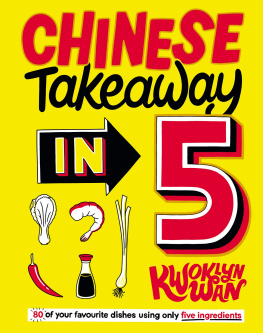





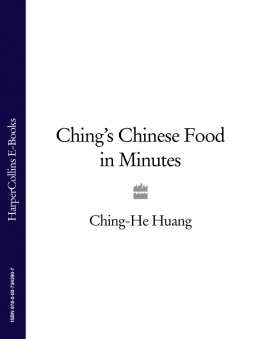

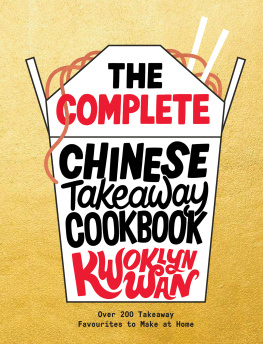
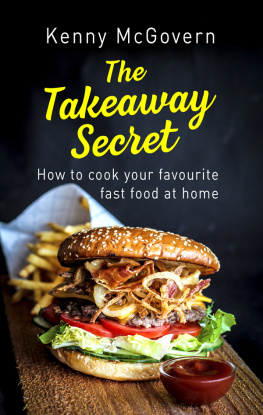

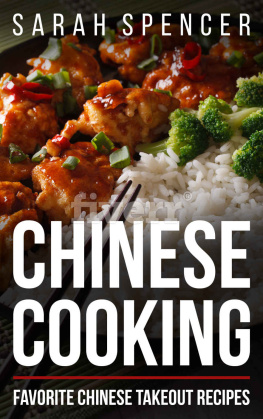
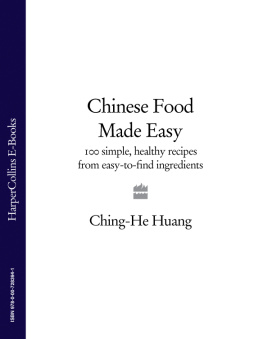
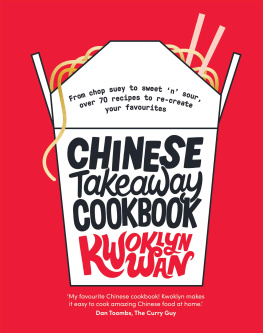
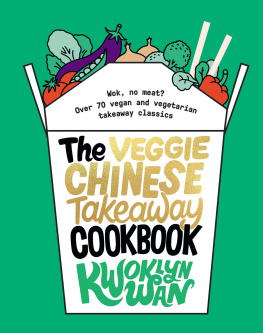
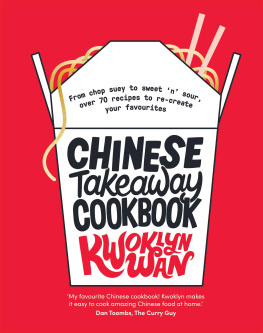
 I will admit that many kitchen gadgets can look fancy and fun to use until you have to wash them, and their many fiddly parts! Aside from the basics in my kitchen saucepans, sieves, mixing bowls, wooden spoons and roasting trays five personal equipment essentials are: my folded, Damascus steel chopper, butchers block chopping board, seasoned wok, Chinese ladle and bamboo steamers. These serve all my peeling, smashing, chopping, frying, steaming and boiling needs. If you dont have a wok, a deep-sided frying pan will work just as well and if the thought of a chopper makes you nervous, a sharp kitchen knife will work. CHINESE COOKING TECHNIQUES Stir-frying This is by far the most common method of cooking when using a wok. The wok was designed to sit above an open fire in a clay hole and the thin base and sides are designed to evenly distribute the heat throughout the entire cooking surface. You must remember that once you begin cooking youll have to pay full attention to what is going on in the wok as you can easily burn the ingredients if you get distracted.
I will admit that many kitchen gadgets can look fancy and fun to use until you have to wash them, and their many fiddly parts! Aside from the basics in my kitchen saucepans, sieves, mixing bowls, wooden spoons and roasting trays five personal equipment essentials are: my folded, Damascus steel chopper, butchers block chopping board, seasoned wok, Chinese ladle and bamboo steamers. These serve all my peeling, smashing, chopping, frying, steaming and boiling needs. If you dont have a wok, a deep-sided frying pan will work just as well and if the thought of a chopper makes you nervous, a sharp kitchen knife will work. CHINESE COOKING TECHNIQUES Stir-frying This is by far the most common method of cooking when using a wok. The wok was designed to sit above an open fire in a clay hole and the thin base and sides are designed to evenly distribute the heat throughout the entire cooking surface. You must remember that once you begin cooking youll have to pay full attention to what is going on in the wok as you can easily burn the ingredients if you get distracted. 1 tbsp Chinese rice wine (or use water)
1 tbsp Chinese rice wine (or use water)  1 tbsp cornflour (cornstarch)
1 tbsp cornflour (cornstarch)  1 tbsp dark soy sauce
1 tbsp dark soy sauce  1 tbsp light soy sauce
1 tbsp light soy sauce  1 tsp bicarbonate of soda (baking soda) Add all the ingredients to a large bowl along with 350600g (1221oz) of your sliced meat or fish. Mix everything together vigorously with your hands for 3045 seconds; there should be no liquid left sitting in the bottom of the bowl. Cover and set aside for, ideally, 2 hours before cooking.
1 tsp bicarbonate of soda (baking soda) Add all the ingredients to a large bowl along with 350600g (1221oz) of your sliced meat or fish. Mix everything together vigorously with your hands for 3045 seconds; there should be no liquid left sitting in the bottom of the bowl. Cover and set aside for, ideally, 2 hours before cooking.  EGG DROP SOUP This soup, so called for the method used to cook the eggs, hits all the right notes: warm, comforting, savoury and yet it still has a deliciously subtle sweetness.
EGG DROP SOUP This soup, so called for the method used to cook the eggs, hits all the right notes: warm, comforting, savoury and yet it still has a deliciously subtle sweetness. Pour the vegetable stock into a medium saucepan and bring to the boil. Next add the creamed corn and return to the boil, before reducing to a gentle simmer and seasoning with white pepper and salt to taste. Stir the cornflour mixture and then gradually add to the simmering soup, stirring constantly until you have reached the desired consistency. Turn the heat down to low and slowly pour in the beaten eggs, swirling and stirring the soup at the same time. Switch off the heat. Transfer the soup to serving bowls, add a drizzle of sesame oil and serve.
Pour the vegetable stock into a medium saucepan and bring to the boil. Next add the creamed corn and return to the boil, before reducing to a gentle simmer and seasoning with white pepper and salt to taste. Stir the cornflour mixture and then gradually add to the simmering soup, stirring constantly until you have reached the desired consistency. Turn the heat down to low and slowly pour in the beaten eggs, swirling and stirring the soup at the same time. Switch off the heat. Transfer the soup to serving bowls, add a drizzle of sesame oil and serve. Place the dried noodle nests into a large bowl and cover with boiling water; allow to soak for 3 minutes, drain and set to one side. Pour the stock into a medium saucepan and bring to the boil. Next add the mushrooms along with the Stir-Fry Sauce, sugar and white pepper. Bring back to the boil and then turn down to a low simmer for 1 minute. Check the seasoning and add salt and a bit more white pepper, if needed. Divide the noodles between 2 bowls (4 if this is a starter), pour over the soup and finally sprinkle with the spring onions.
Place the dried noodle nests into a large bowl and cover with boiling water; allow to soak for 3 minutes, drain and set to one side. Pour the stock into a medium saucepan and bring to the boil. Next add the mushrooms along with the Stir-Fry Sauce, sugar and white pepper. Bring back to the boil and then turn down to a low simmer for 1 minute. Check the seasoning and add salt and a bit more white pepper, if needed. Divide the noodles between 2 bowls (4 if this is a starter), pour over the soup and finally sprinkle with the spring onions.